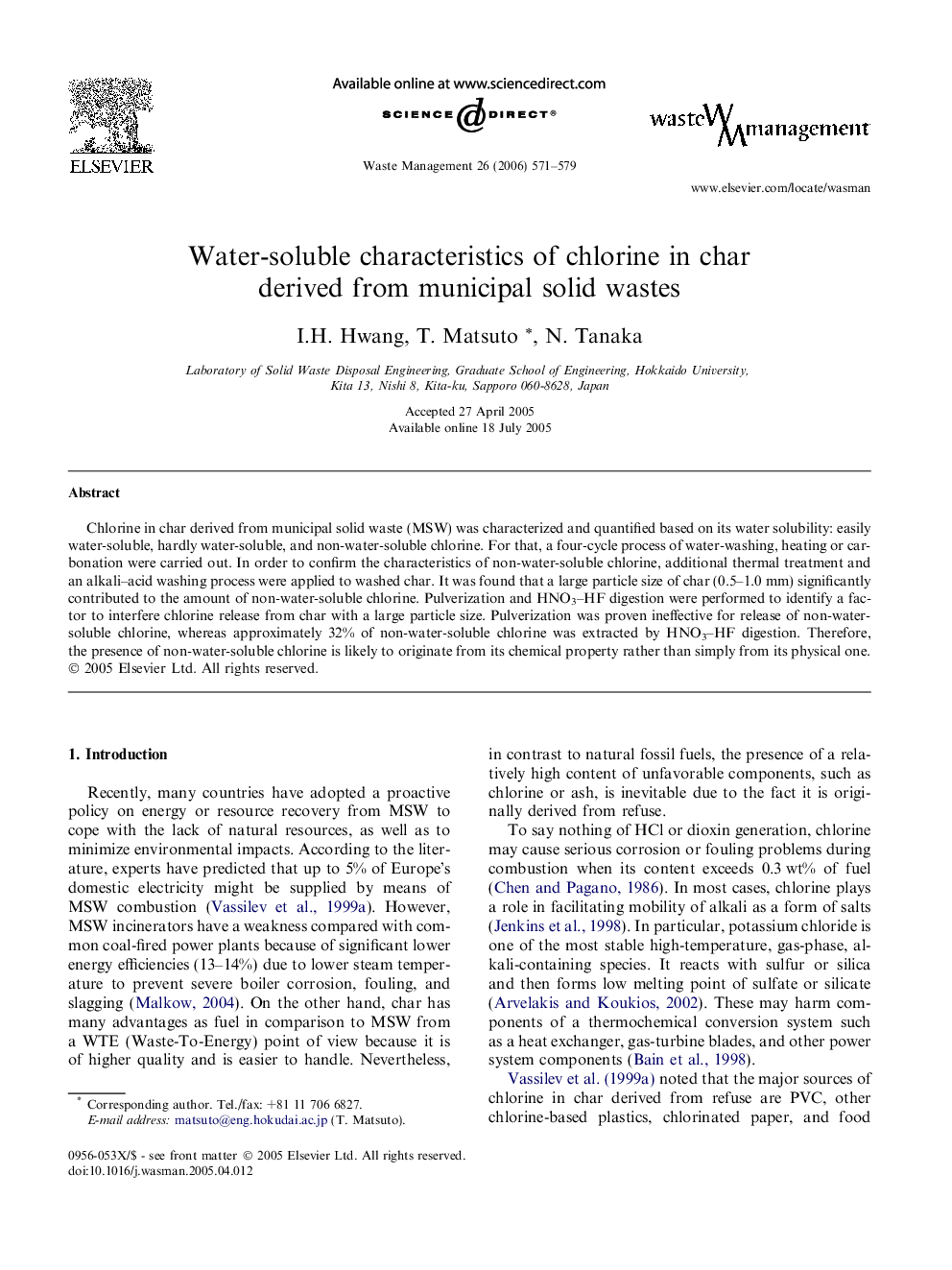| Article ID | Journal | Published Year | Pages | File Type |
|---|---|---|---|---|
| 4473844 | Waste Management | 2006 | 9 Pages |
Chlorine in char derived from municipal solid waste (MSW) was characterized and quantified based on its water solubility: easily water-soluble, hardly water-soluble, and non-water-soluble chlorine. For that, a four-cycle process of water-washing, heating or carbonation were carried out. In order to confirm the characteristics of non-water-soluble chlorine, additional thermal treatment and an alkali–acid washing process were applied to washed char. It was found that a large particle size of char (0.5–1.0 mm) significantly contributed to the amount of non-water-soluble chlorine. Pulverization and HNO3–HF digestion were performed to identify a factor to interfere chlorine release from char with a large particle size. Pulverization was proven ineffective for release of non-water-soluble chlorine, whereas approximately 32% of non-water-soluble chlorine was extracted by HNO3–HF digestion. Therefore, the presence of non-water-soluble chlorine is likely to originate from its chemical property rather than simply from its physical one.
